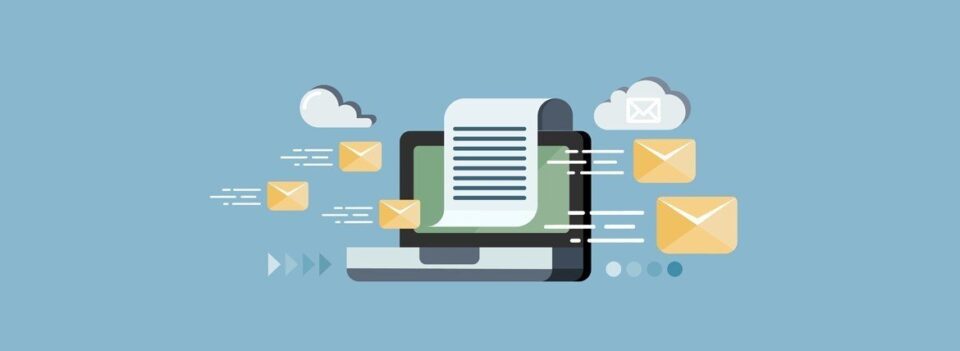Email marketing is a crucial component of the B2B marketing mix. It allows marketers to reach out to their prospects and customers with targeted, personalized messages that are relevant and timely. However, email marketing can be a challenging and complex process. B2B marketers must overcome the challenges of building an effective email list, crafting compelling emails, timing and frequency, automation and segmentation, and measuring campaign success. In this blog post, we’ll explore the best approaches and examples of B2B email marketing, so you can create successful campaigns that generate leads and conversions.
-
Building an Effective Email List
The first step to a successful B2B email marketing campaign is building an effective email list. The email list is the foundation of any campaign and plays a critical role in determining the success of your efforts. To build an effective email list, you should focus on creating a targeted list of prospects and customers who have shown an interest in your products or services.
- Leveraging website visitors: Use opt-in forms on your website to collect email addresses from visitors who are interested in your products or services.
- Social media: Promote your email list on your social media channels and encourage your followers to sign up.
- Lead generation campaigns: Run lead generation campaigns that offer a valuable resource, such as an eBook or white paper, in exchange for contact information.
Remove any invalid or bounced email addresses and regularly update your list to ensure that it remains targeted and relevant.
2. Crafting Compelling Emails
Crafting compelling emails is essential for driving engagement and conversions from your B2B email marketing campaigns. To create effective emails, you should focus on the following key elements:
- Subject lines: The subject line is the first thing your recipient sees, so it’s essential to make it compelling and attention-grabbing. Use personalization and try to convey the value of your email in the subject line.
- Personalization: Personalization is a powerful tool that can help improve engagement rates. Use the recipient’s name and personalize the content based on their interests, preferences, and behavior.
- Compelling content: The content of your email should be relevant, informative, and engaging. Use case studies, industry research, and product updates to provide value to your recipients.
- Design: The design of your email should be visually appealing and easy to read. Use images, colors, and fonts that reflect your brand and make your email stand out.
3. Timing and Frequency
Timing and frequency are critical components of B2B email marketing campaigns. Timing refers to the specific time of day and day of the week when you send your emails, while frequency refers to how often you send them. To determine the optimal timing and frequency of your emails, you should consider the following best practices:
- Test and experiment: Test different times and frequencies to determine what works best for your audience.
- Analyze your data: Use data and analytics to analyze the performance of your campaigns and identify patterns or trends.
- Consider your audience: Think about your audience’s work schedule, time zone, and email habits when determining the best time and frequency to send your emails.
4. Automation and Segmentation
Automation and segmentation can help improve the effectiveness of your B2B email marketing campaigns. Automation refers to using software to automate repetitive tasks, such as sending follow-up emails or nurturing leads. Segmentation involves dividing your email list into smaller, targeted groups based on specific criteria, such as the recipient’s job title or stage in the buyer’s journey.
Using automation and segmentation can help you:
- Improve engagement rates
- Increase conversion rates
- Provide a personalized experience for your recipients
- Save time and resources
Some examples of automated emails that can improve the effectiveness of your B2B email marketing campaigns include:
- Welcome emails: Send a personalized welcome email to new subscribers to introduce your brand and provide valuable information.
- Abandoned cart emails: Send an email to subscribers who have abandoned their shopping cart to remind them of their interest in your products or services.
- Nurturing emails: Send a series of emails to nurture leads and move them through the buyer’s journey.
5. Measuring Campaign Success
Measuring the success of your B2B email marketing campaigns is essential for improving performance and ROI. There are several metrics you should track to measure campaign success, including:
- Open rates: The percentage of recipients who open your emails.
- Click-through rates: The percentage of recipients who click on links within your emails.
- Conversion rates: The percentage of recipients who take a desired action, such as filling out a form or making a purchase.
- Bounce rates: The percentage of emails that are undeliverable or rejected by the recipient’s email server.
By analyzing these metrics, you can identify areas for improvement and optimize your campaigns for better results.
Conclusion
B2B email marketing can be a challenging and complex process, but by following best practices and using the right tools and strategies, you can create effective campaigns that generate leads and conversions. Focus on building an effective email list, crafting compelling emails, timing and frequency, automation and segmentation, and measuring campaign success.
FAQs:
- What is a B2B marketing agency?
A B2B marketing agency is a company that specializes in helping businesses market their products or services to other businesses. B2B marketing agency typically offer a range of services, including strategy development, lead generation, content creation, and digital marketing.
- How can a webinar marketing agency help with B2B email marketing?
A webinar marketing agency can help with B2B email marketing by creating and promoting webinars that generate leads and build relationships with your audience. They can also provide expertise in email marketing strategy, content creation, and automation to optimize your campaigns for better results.
- How often should I send B2B marketing emails?
The optimal frequency of B2B marketing emails depends on your audience and your goals. Generally, it’s best to avoid sending too many emails and focus on quality over quantity. Test different frequencies to determine what works best for your audience and adjust your strategy accordingly.
- What are some best practices for B2B email marketing?
Some best practices for B2B email marketing include building an effective email list, crafting compelling emails with personalized content, using segmentation and automation to target specific audiences, and measuring campaign success to optimize future campaigns.
- How do I measure the success of my B2B email marketing campaigns?
You can measure the success of your B2B email marketing campaigns by tracking metrics such as open rates, click-through rates, conversion rates, and bounce rates. By analyzing these metrics, you can identify areas for improvement and optimize your campaigns for better results.


